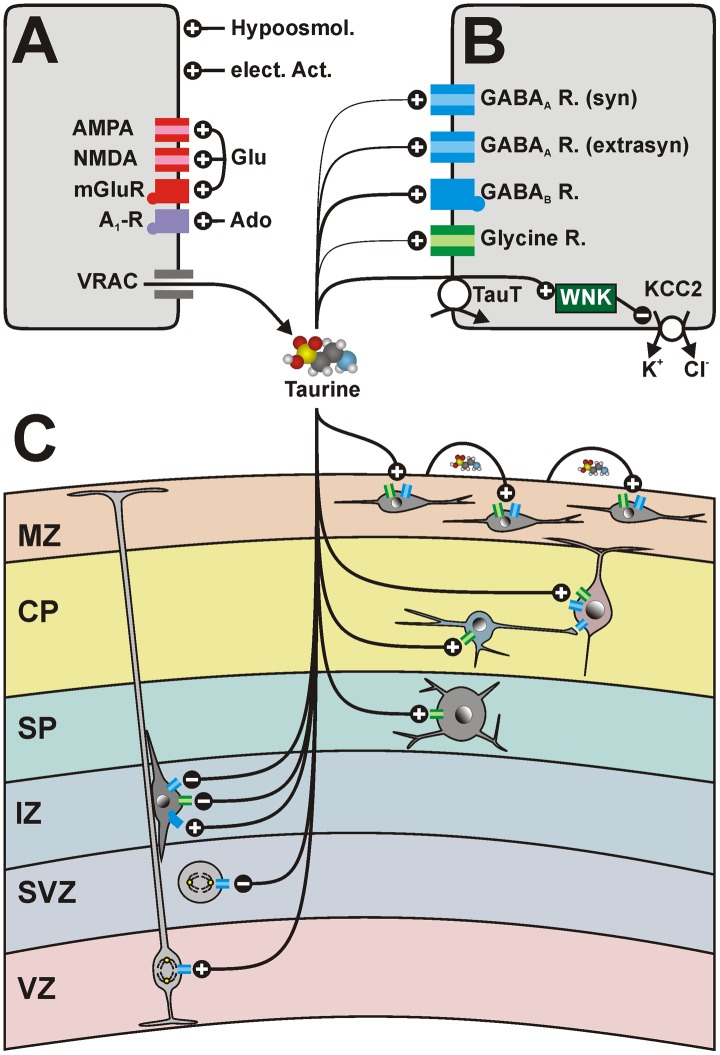FIGURE 5.
Schematic diagram summarizing the effects of taurine on the immature neocortex. (A) Taurine release is mediated mainly by volume-regulated anion channels (VRAC). The release of taurine is activated by hypoosmotic conditions, electrical activity and via glutamate (Glu), and adenosine (Ado) receptors. (B) Taurine mediates its effects via low-affinity binding to glycine receptors (green symbols) or GABAA receptors (blue symbols) with subunit compositions typical for synaptic receptors. While the taurine affinity to putatively extrasynaptic GABAA receptors is moderate, taurine is a high-affinity ligand for GABAB receptors. In addition, the intracellular taurine concentration, regulated by the TauT, suppresses the function of the Cl- extruder KCC2 via activation of the WNK pathway, thus maintaining depolarizing taurinergic membrane responses. (C) Putative effect of taurine on different cell populations in the developing neocortex. Taurine promotes proliferation in the VZ, but attenuates proliferation in the SVZ. It stimulates chemotaxis via GABAB receptors and suppresses radial migration via GABAA and glycine receptors. Taurine depolarizes SP neurons, pyramidal cell and GABAergic interneurons in the CP, as well as CRc in the MZ via activation of GABAA and/or glycine receptors. The taurinergic depolarization of GABAergic interneurons is in vitro sufficient to generate GABAergic network activity transmitted to pyramidal cells. CRc participate to propagating activity in the MZ mediated by activity-dependent taurine release. See text for details.

